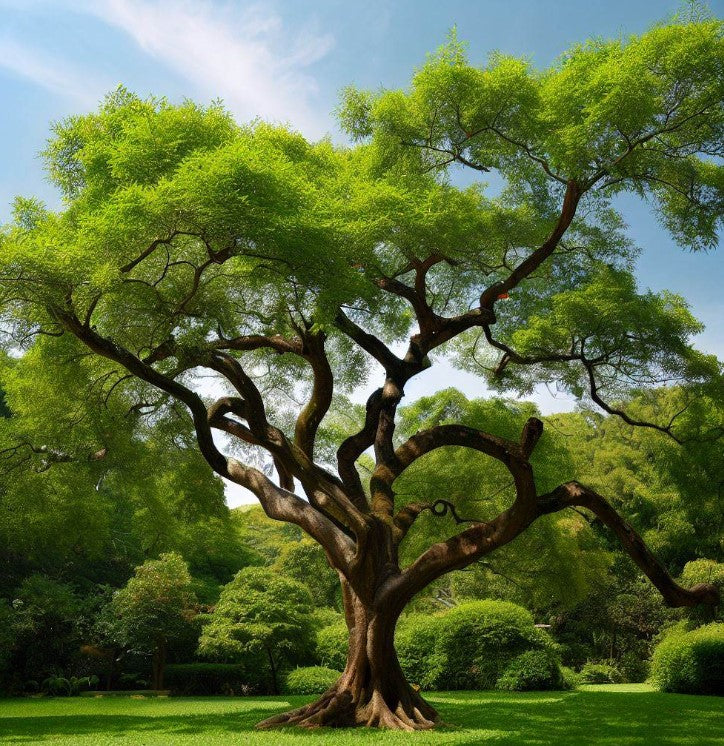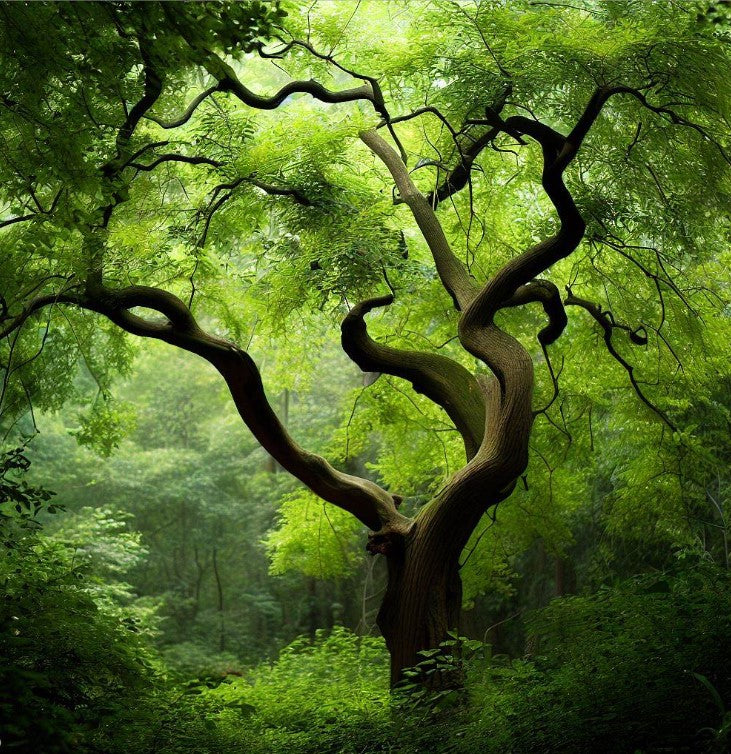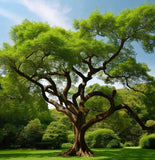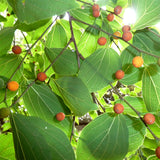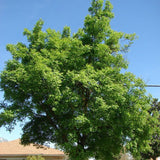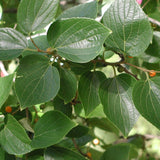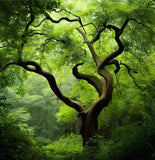Celtis sinensis (Japanese Hackberry)
Celtis sinensis (Japanese Hackberry) is a deciduous tree native to East Asia, including China, Japan, Korea, and Taiwan. The Japanese Hackberry is a medium-sized tree that typically grows to a height of 30 to 50 feet (9 to 15 meters) and has a rounded or spreading crown. It has a grayish-brown bark that is often corky and deeply furrowed. The leaves are alternate, simple, and serrated, with a pointed tip and a rough texture. They are typically dark green in color, turning yellow in the fall.
Flowers and Fruits: The Japanese Hackberry produces small, inconspicuous flowers that are greenish-yellow in color. The flowers are not particularly showy and are followed by small, round fruits that ripen to a dark purple or black color. The fruits are drupes and are edible, often enjoyed by birds and wildlife.
Habitat and Range: The Japanese Hackberry is adaptable to a variety of soil types and can tolerate both sun and shade, although it prefers well-drained soil. It is commonly found in forests, along streams, and in urban areas as a street or shade tree. It is widely cultivated and has been naturalized in some parts of the world.
Uses: The wood of the Japanese Hackberry is not highly valued for its timber, but the tree is often planted for its ornamental value. It is appreciated for its attractive foliage, textured bark, and overall graceful appearance. The fruits are occasionally consumed by humans, and the tree also provides habitat and food for birds and wildlife.
Ecological Importance: The Japanese Hackberry is known to support a variety of insects, including butterfly larvae and caterpillars, which feed on its leaves. The tree also provides shelter and nesting sites for birds. Its fruits are a valuable food source for wildlife, helping to support local ecosystems.
Cultural Significance: In some cultures, the Japanese Hackberry is considered a symbol of longevity and resilience. It is also used in traditional medicine in some Asian countries, where various parts of the tree are believed to have medicinal properties.
Cultivation: The Japanese Hackberry is cultivated as an ornamental tree in many parts of the world, including North America and Europe. It is valued for its ability to adapt to different growing conditions and its attractive features. It can be grown from seeds or propagated through grafting or cuttings.
Botanical Name : Celtis sinensis
Common Name : Japanese Hackberry
Height : 50- 80 ft
Spread : 40 ft
Germination Info : Seed requires 60-90 days cold stratification.
Hardiness zone : 7-9
Average seed per ounce : Approx. 125

